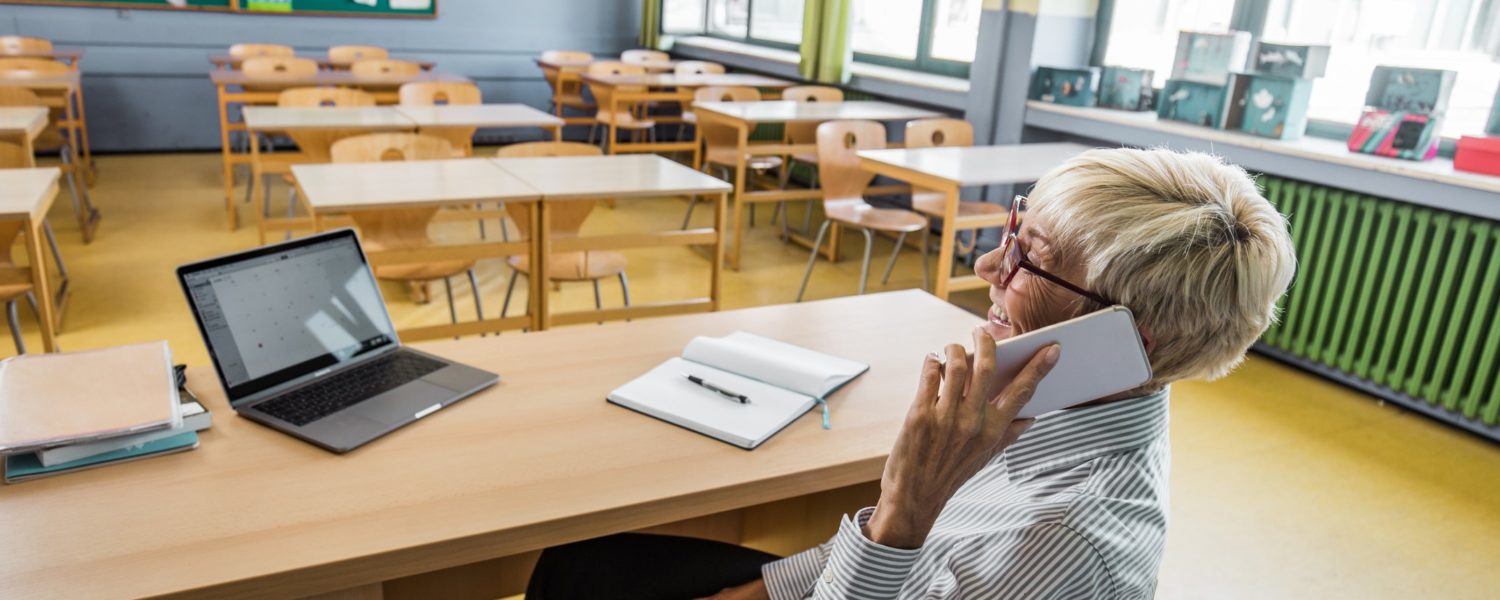By Ellen Lee
With changes happening daily in school systems, being proactive in communicating with parents is more important than ever. You’ve likely increased the frequency of your messaging to get everyone on the same page. So why does it feel like the information isn’t getting through?
The reason has a lot to do with the difference between messaging and communication.
Intuitively, you probably already have an idea of the difference. Messaging is one-way; communication is two-way. Here’s a good example of how that plays out for K12 parents:
When asked about the frequency of contact with schools, recent survey data found that parents said they wanted more interaction with schools. The same group of parents also stated they wanted less interaction.
There are a lot of potential reasons for this difference. For example, non-English speakers may want more accessible information in their own language.
Parents who already opted-in to updates from the school website and follow the school on social media channels may feel additional messaging is too much—they’re proactive and find what they need online.
Parents without home computers or smartphones may see very little school messaging and feel they aren’t getting enough information from the school at all.
The discrepancy in the survey results, even between sets of parents within the same school district, suggests that the problem isn’t as simple as frequency—too much or too little interaction with the school—the problem is the content of messages and the way they are received.
That’s because a lot of engagement efforts tend to be both impersonal and one-way. Messaging in general is about controlling the narrative and nudging behavior. Too much of this and parents tune out entirely. Communication, however, is two-way. Communication fosters empathy and encourages shared perspectives.
Drinking from the Fire Hose
Liz George, Clarksdale Municipal School District Lab Intervention and Data Manager, says parents block school communication because the content is not personal to their needs. “When I talk to some of the parents who have done that, to find out why, it was that they felt in general that there was a lot of noise coming at them.”
Consider a parent with three children, depending on their grades, they may have up to 7 teachers, plus principals, counselors, coaches, all of whom may be using a different messaging tool for updates and announcements. Some require parents to download an app. Others require parents to register with a specific code for each teacher. This means messages are coming from every direction, and only the parents with time and a smartphone are participating—potentially limiting your reach before you send the first text.
The parents who do opt-in to all communication channels are likely to get dings and alerts throughout the day. Add frequent ‘robo’ messages on top of that and something is going to get turned off. Too often it’s information from the school because it doesn’t feel relevant.
If we control the frequency and the channel and focus on content, we get to the heart of communication versus messaging. Messaging is generic. Communication means information is flowing both ways. Communication builds relationships.
Communication = Empathy
Liz George helps district leaders utilize tools to approach parents with understanding and empathy. “If I’m consistently sending out group messages that say ‘Don’t forget to have your child log in today,’ or ‘Your child has a test on Friday’— if that’s the majority of what they’re getting and not the actual back and forth communication with the teacher, it becomes kind of an intrusion.”
George advocates for less mass messaging and more one-to-one communication with parents. Her instruction to principals reinforces the fact that personal communication is the most likely to create buy-in from stakeholders. For example, individual texts or calls with instruction, advice, or praise in preparation for the test are more likely to be met with warmth from parents. Using the parents’ full name and title, or including a compliment for the student based on observations demonstrates investment in each student.
Don’t forget that parents appreciate a compliment as well. Whether it’s about improved attendance or successful at-home tech support, letting parents know their efforts are acknowledged and appreciated goes a long way, especially as parents’ role in distance learning has created so much stress.
Even better if that encouragement is easy-to-receive—a text message that doesn’t require parents to jump through hoops to read or reply, for example. “I think a lot of our parents, especially the ones who are working, like to be able to have that quick text to read what you are saying and then know, ‘Hey I can call this person when I get to my break,’ ” shares Liz George.
When schools engage with parents on a human-to-human level, parents are more likely to embrace advice and guidance from educators regarding the support they give their children. So, how do we do that?
Who’s In Charge Here
Being on the same team with parents is crucial, but schools have more control over whether or not that happens then they might think. That includes:
- Using a communication tool that doesn’t require parents to opt-in to an app or have a smartphone
- Measuring frequency of interaction with parents and monitoring their responses
- Balancing informational messages with personal conversations
- Avoiding jargon and using an approachable tone
- Building awareness of parent’s social or cultural relationships with schools
- Supporting parent communication in each parent’s own language
- Being open to hearing concerns and voices from your stakeholders
Focusing on ‘communication’ over ‘messaging’ may be a challenge in terms of time and the already heavy load on your staff—but you might find that now is the perfect time to reinvent old habits.
The “New Normal”
To say that K12 education changed dramatically in the spring of 2020 would be a vast understatement. And it hasn’t been pretty. Or fun. As schools settle back into a new year with hybrid models of in-person and remote learning, we have a chance to put the chaotic pieces of education as we knew it back together with thoughtfulness and equity. That includes building an infrastructure of relationships with parents.
The difference between messaging and communication plays a big part in whether or not a parent is happy with the teacher, the school, and the district—but it plays a bigger role in helping parents support their children.
When parents have a relationship with educators, are engaged with school initiatives and aware of classroom goals, they are equipped to be better supporters and advocates for their children. And that is our ultimate goal. Not to get information to parents, but to create relationships that help parents understand and engage in their child’s journey.
Ellen Lee is the marketing manager at SchoolStatus, the district-wide communication tool that integrates key student data in order to increase communication among educators, district administrators and student families, www.schoolstatus.com.






